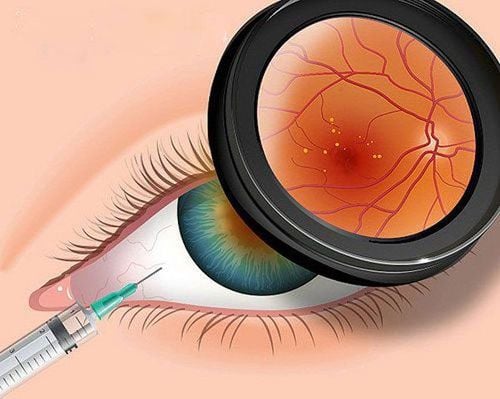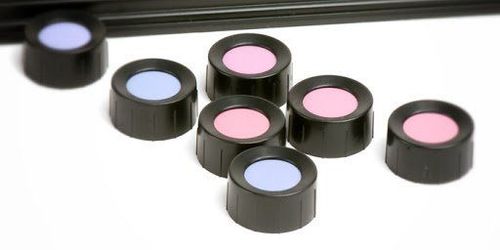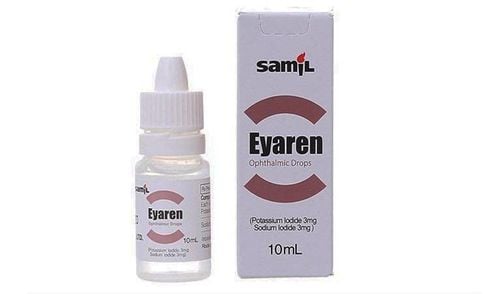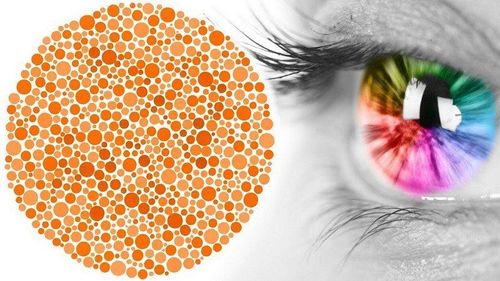This is an automatically translated article.
The article is professionally consulted by Master, Doctor Nguyen Thi Ngoc - General Internal Medicine - Endocrinology - Department of Examination & Internal Medicine - Vinmec Central Park International General Hospital. Doctor has more than 10 years of studying, researching and working in the field of endocrinology.Color vision test is done to detect a disorder of color vision or commonly known as color blindness. This is a disease in which patients can see things around but cannot distinguish their colors, so they will have many difficulties in work and daily activities.
1. What is a chroma test?
Color vision test is done to detect a disorder of color vision or commonly known as color blindness. This is an eye disease that causes the patient to be unable to distinguish certain colors. The cause of the disease may be genetic, aging, some diseases such as glaucoma, macular degeneration, Parkinson's disease, Alzheimer's disease, diabetes, .. In addition, regular use Certain medications (such as some medications for neurological disorders, high blood pressure, infections, etc.) or exposure to toxic chemicals can also affect some color vision.
Disorders of color vision are divided into two levels:
Hematology: The patient cannot distinguish certain colors, while others can still distinguish. There are two types of chromophobia: the inability to distinguish between green and red and the inability to distinguish between yellow and blue. Color blindness: The patient is completely unable to distinguish between colors. Chromatosis is more common in men than in women. According to an investigation of an eye hospital, the disease occurs in 3-5% of women and 8-10% of men who come to the clinic. In which, mainly chromosomal disorder, complete color blindness is very rare.

Bệnh thoái hóa điểm vàng có thể gây biến chứng mù màu cho người bệnh
2. How is the chroma test performed?
To check the color vision, the patient will be tested for color blindness. There are two types of color blind tests: qualitative and quantitative tests. In particular, the qualitative test helps to detect patients with color vision problems, while the quantitative test helps determine the type of color blindness, the degree of color blindness of the patient.
2.1. The most commonly used qualitative test for color blindness is the Ishihara color vision test. This test consists of circular patterns, which contain many small dots with different sizes, colors, and weights. Some of the dots in the figure form a one to two digit shape or number that can be easily recognized by a normal person, while a color blind person cannot see or see a number other than that. people with normal color vision.
To perform the Ishihara color vision test, the patient will be shown drawings in normal lighting conditions while wearing their own glasses. Because the Ishihara test requires participants to recognize and identify numbers, this test is not suitable for very young children.
2.2. The most commonly used quantitative color blindness test is the Farnsworth-Munsell 100 color test. This test consists of 4 trays containing many small plates with different colors. Each tray has multiple discs with an associated color range. The test participant must arrange the color discs in the tray so that the following color must be closest to the first color, forming a continuous series of increasing colors. The more similar the color order is to the sample, the higher the ability of that person to perceive colors.

Test màu Farnsworth-Munsell 100
The Farnsworth-Munsell 100 color test provides a more detailed analysis of color blindness, not only detecting whether participants are colorblind or not, but also determining the type and severity of their chromatic disturbance.
The Farnsworth-Munsell 100 color test is performed in close proximity to natural light, with the patient wearing their own glasses. The color discs must be replaced at least every 2 years to prevent color fading from affecting the evaluation results.
Currently, online color blindness tests are very popular on the internet. However, the image quality of these colorblind tests may not be guaranteed. Therefore, in order to accurately assess the status of chromatic aberration, the patient should visit an eye specialist and do a color blindness test with professional instruments in qualified lighting conditions.
3. When should a color blind test be performed?
The influence of color blindness on a person's ability to work depends on how high or low the job demands for color discrimination. The chromaticity test is extremely necessary for those who do jobs that require accurate color perception such as designers, painters, electricians, people in the manufacturing, marketing...

Khám mắt, kiểm tra mắt định kỳ luôn là việc làm cần thiết của mỗi con người
In addition to congenital chromosomal disorders, the working environment is exposed to toxic chemicals, chronic diseases, and long-term use of some drugs also affect the ability to perceive colors. Therefore, checking the chromatic acuity during the periodical general health checkup is extremely necessary, helping to detect the color disorder early, the patient will be treated promptly, avoiding the serious development of the disease. .
Periodic health check is the best way for each person to protect their own health. Vinmec Health System is currently implementing many general health check-up packages with many options to bring many benefits to customers. Customers will have a comprehensive general examination, perform tests to evaluate body indexes, perform imaging techniques, probe to diagnose and detect diseases early. With a system of modern facilities according to international standards and a team of experienced, well-trained medical professionals both at home and abroad, will create peace of mind and satisfaction for customers.
Please dial HOTLINE for more information or register for an appointment HERE. Download MyVinmec app to make appointments faster and to manage your bookings easily.













